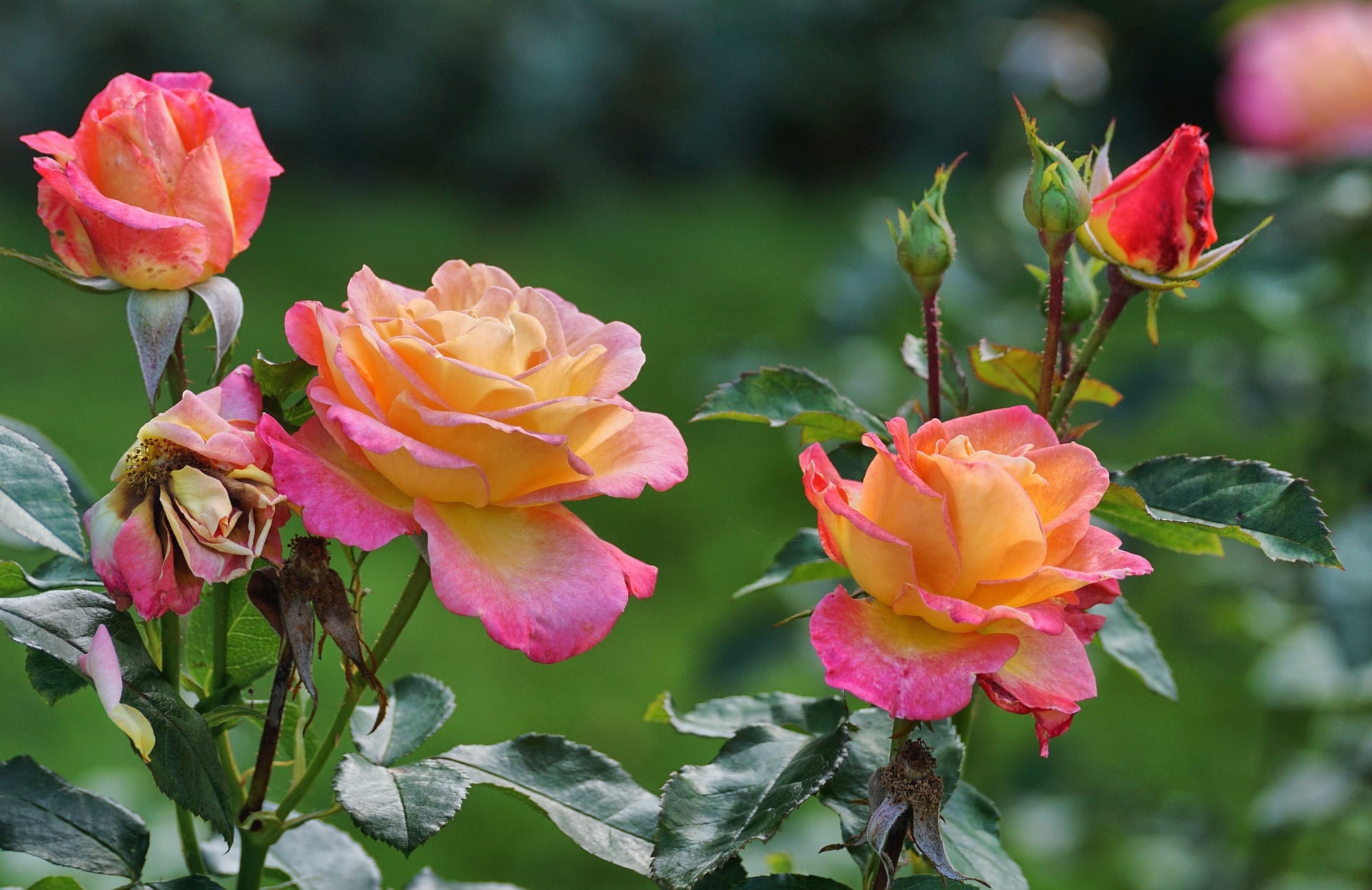Discover the secret to a prick-free rose garden: Explore the unique genetics and diverse beauty of thornless rose bushes. These stunning blooms offer all the elegance and fragrance of traditional roses without the painful thorns, making them perfect for families, high-traffic areas, and anyone who simply prefers a less prickly gardening experience.
Decoding Thornless Roses: Myth vs. Reality
So, are thornless roses truly thorn-free? The answer is a bit nuanced. While genuine thornless roses are rare, many varieties marketed as “thornless” actually have significantly reduced thorns or prickles, especially at the base of the canes. These “almost thornless” roses offer a practical compromise, providing a safer and more manageable gardening experience while still retaining some of the plant’s natural defenses. This reduction in thorns is primarily due to a fascinating genetic phenomenon called a chimera, where the outer layer of the stem develops differently and suppresses thorn formation.
Exploring Thornless Rose Varieties: A Rose for Every Garden
Thornless roses come in a dazzling array of types and colors, ensuring there’s a perfect variety for every garden and preference. Here are a few popular choices:
- Climbers: ‘Zephirine Drouhin’ (deep pink, highly fragrant), ‘A Shropshire Lad’ (apricot-pink, strong fragrance), ‘Blue Magenta’ (purplish-pink, moderate fragrance). These varieties are ideal for adorning trellises, arches, and walls, adding vertical interest to your landscape, much like the vibrant trailing verbena cascading from hanging baskets.
- Ramblers: ‘Amadis Rambler’. These vigorous growers are perfect for covering fences and other structures.
- Miniatures: ‘Cinderella’ (white to pink, delicate blooms). These charming miniatures thrive in containers and small spaces.
- Hybrids: ‘Chloris’ (nearly thornless hybrid with a sweet fragrance). This variety offers a unique blend of beauty and resilience.
Reaping the Rewards: Benefits of Thornless Roses
Why choose thornless roses? The advantages extend beyond the obvious “no-prick” perk:
- Child and Pet-Friendly: Create a safe and enchanting garden where children and pets can explore without fear of injury.
- Effortless Pruning and Handling: Say goodbye to painful scratches and snagged clothing. Pruning becomes a breeze, allowing for easier shaping and maintenance.
- Versatile Placement Options: Plant thornless roses near walkways, doorways, and other high-traffic areas without posing a hazard. Their adaptability also makes them perfect for integrating into various garden structures, such as arches and trellises. You can even train them to grow flat against a wall, creating a stunning living tapestry through espalier techniques.
Nurturing Your Thornless Beauties: A Comprehensive Care Guide
Caring for thornless roses is similar to caring for their thorny counterparts, with a few nuances depending on the specific variety. Here’s a comprehensive guide to ensure your thornless roses thrive:
- Planting: Select a sunny location (at least six hours of direct sunlight per day) with well-draining soil. If your soil is heavy clay, amend it with compost or other organic matter to improve drainage. Dig a hole twice the width and depth of the root ball, ensuring the bud union (where the canes meet the rootstock) is level with or slightly above the soil surface. Adorn your landscape with a burst of colors cascading over the edges of pots and hanging baskets.
- Watering: Water deeply and regularly, especially during dry periods. Aim for about an inch of water per week. Avoid overhead watering, which can encourage fungal diseases.
- Fertilizing: Feed your roses regularly during the growing season (spring and summer) with a balanced rose fertilizer. Follow the package instructions carefully.
- Pruning: Prune in late winter or early spring to remove dead, damaged, or diseased canes. This also helps shape the bush and encourage new growth.
- Pest and Disease Control: Regularly inspect your roses for signs of pests or diseases. Treat any issues promptly with appropriate, preferably organic, solutions.
- Extra Care Tips: Mulching around the base of the plant helps retain moisture, suppress weeds, and regulate soil temperature. Deadheading spent blooms encourages more flowers. In colder climates, protect your roses from winter damage with mulch and/or protective wrapping. Much like the care required for a pygmy date palm, understanding your chosen rose’s individual needs can greatly contribute to its well-being.
The Future of Thornless Roses: Blossoming Possibilities
Ongoing research in rose breeding suggests a bright future for thornless varieties. Scientists are constantly striving to develop new cultivars with enhanced disease resistance, a wider range of colors and fragrances, and even further reduction in prickles. These advancements promise even more beautiful and easier-to-care-for thornless roses for gardeners to enjoy.
Embrace the beauty without the prickles and discover the joy of thornless roses today! With their unique blend of elegance, safety, and ease of care, they are a rewarding addition to any garden.
- Georgia Platform: A Southern Strategy, 1850s - March 31, 2025
- How many weeks is 40 days: Quick Conversion Guide for Accurate Results - March 31, 2025
- How many feet is 300 meters? 984 Feet: Understand Length Conversions Easily - March 31, 2025

















1 thought on “The Complete Guide to Thornless Rose Bushes: Growing & Care”
Comments are closed.